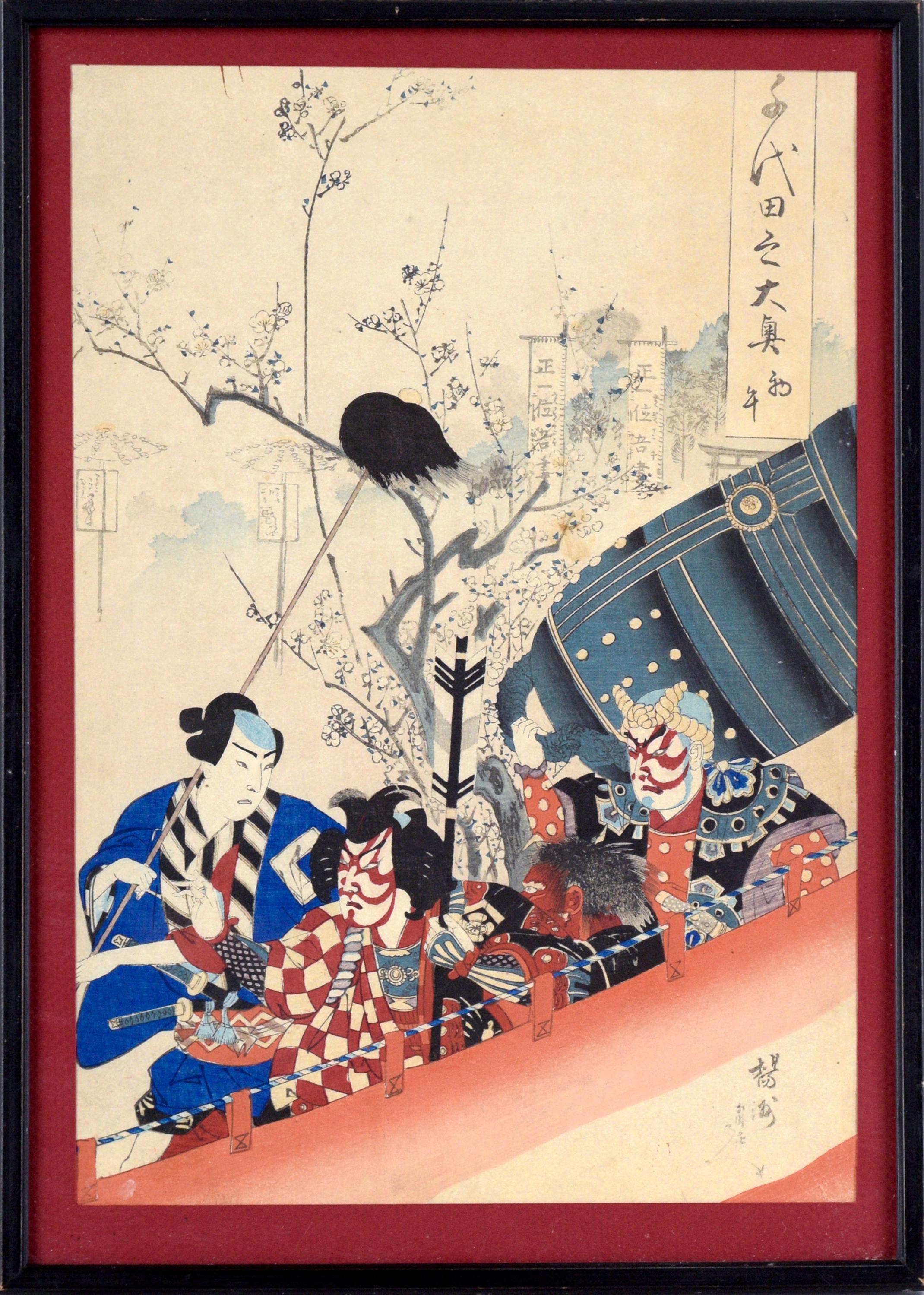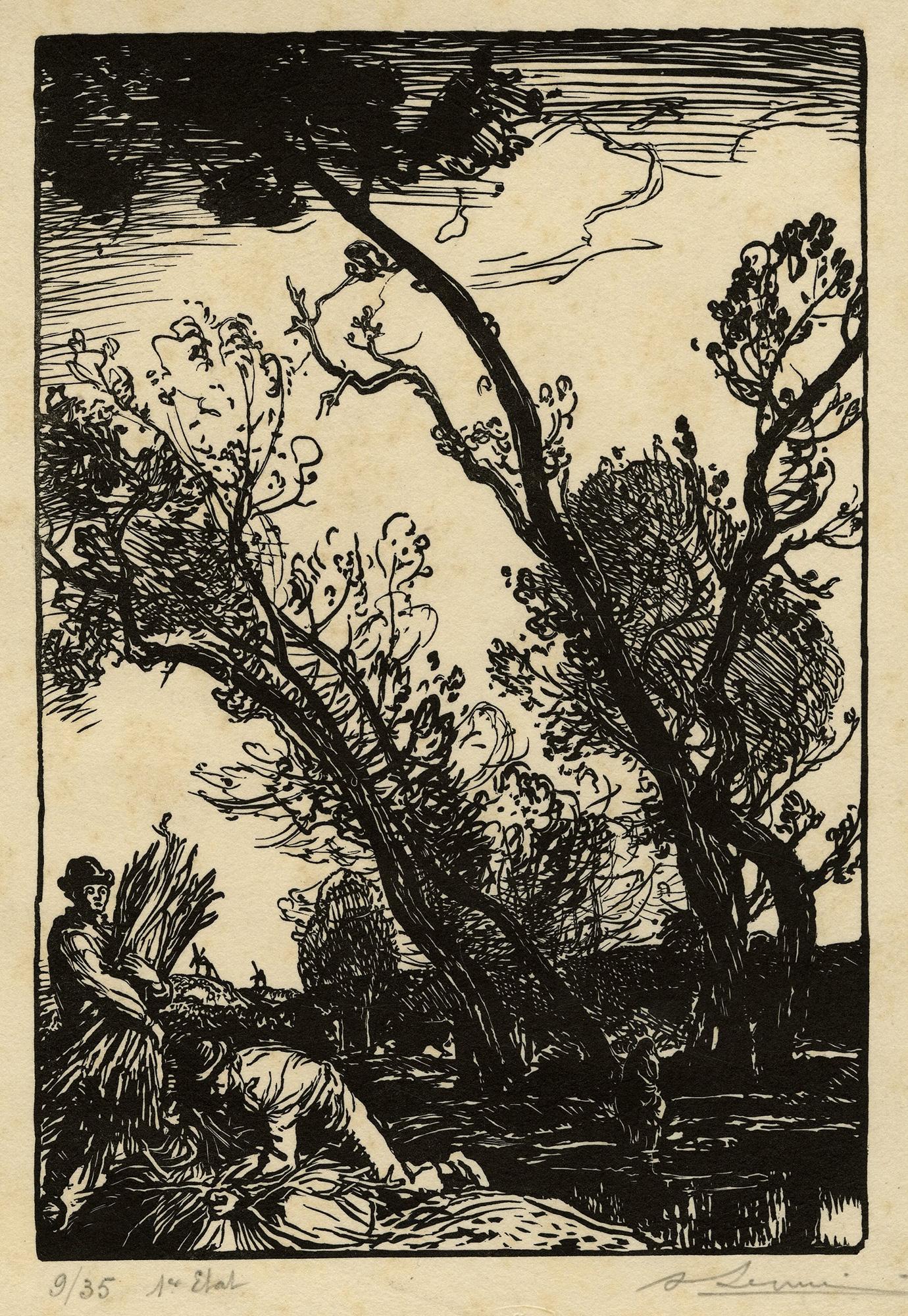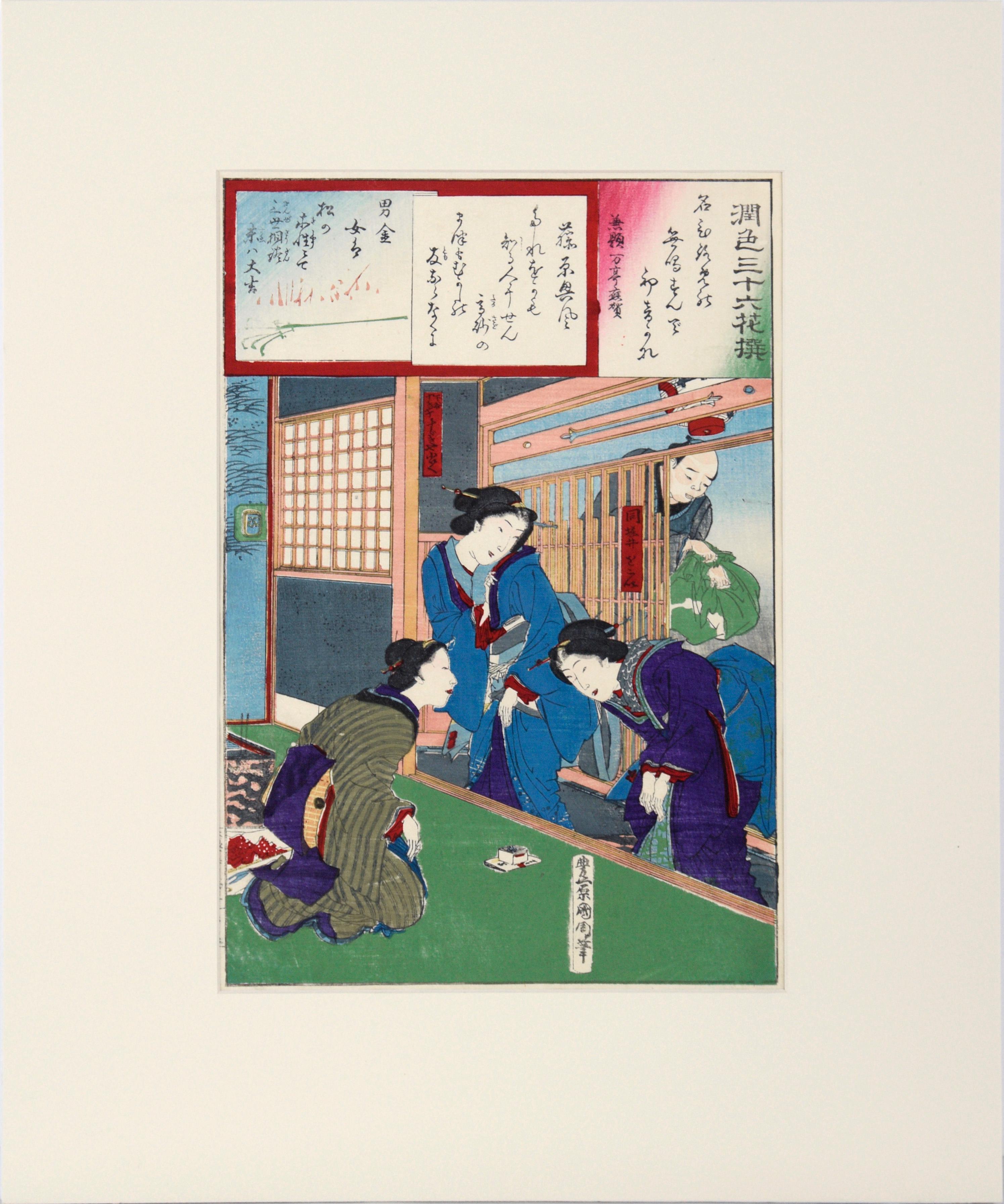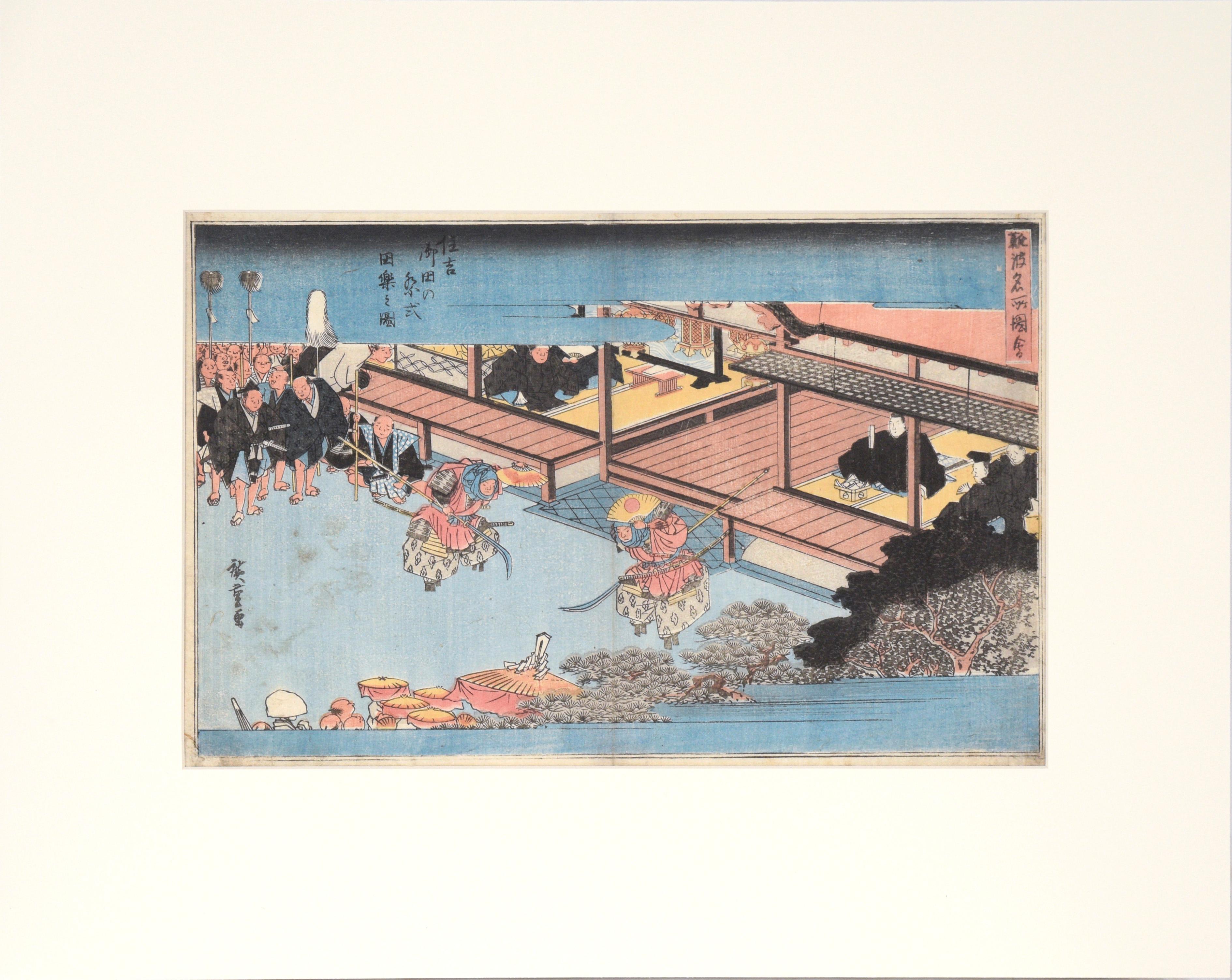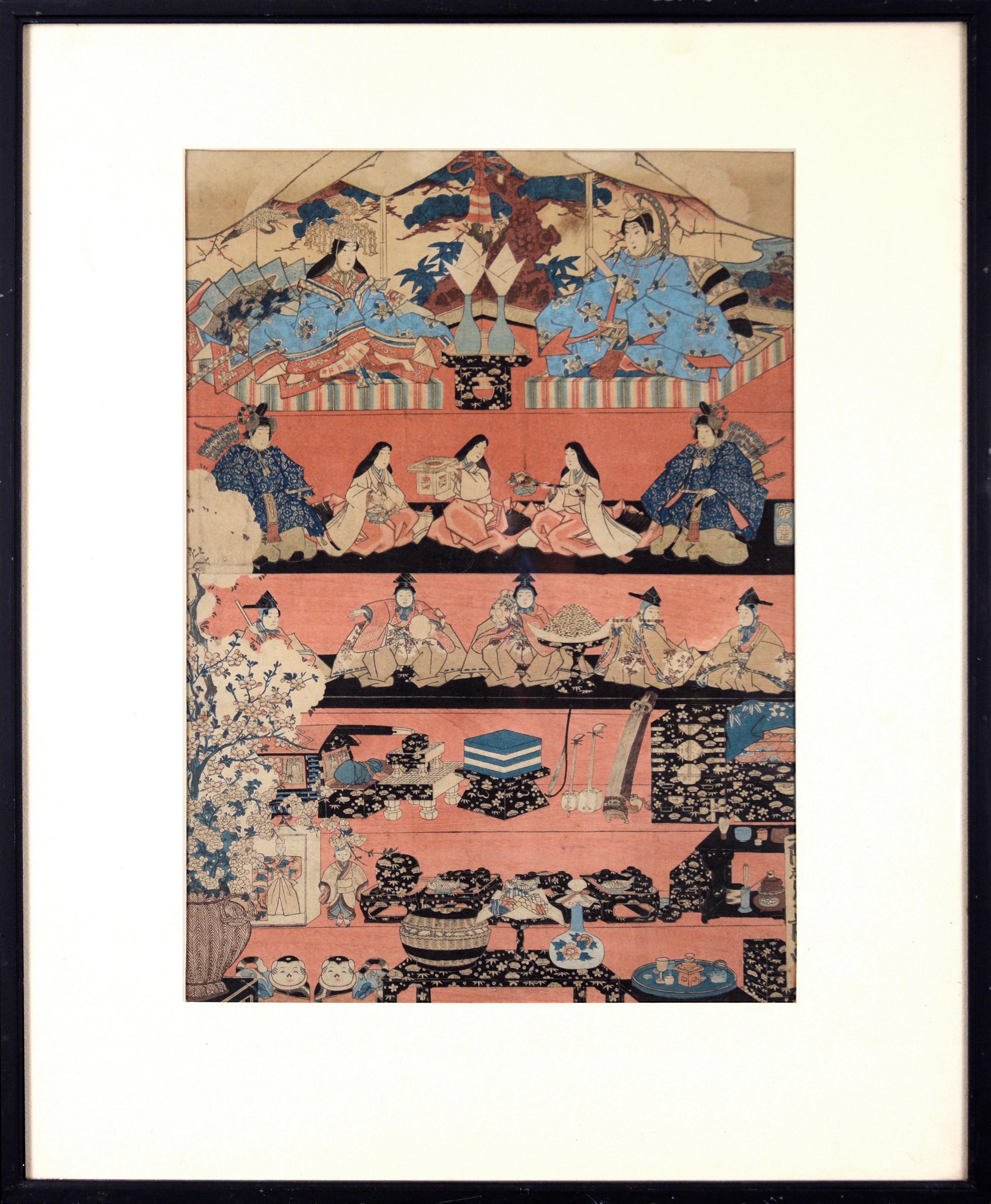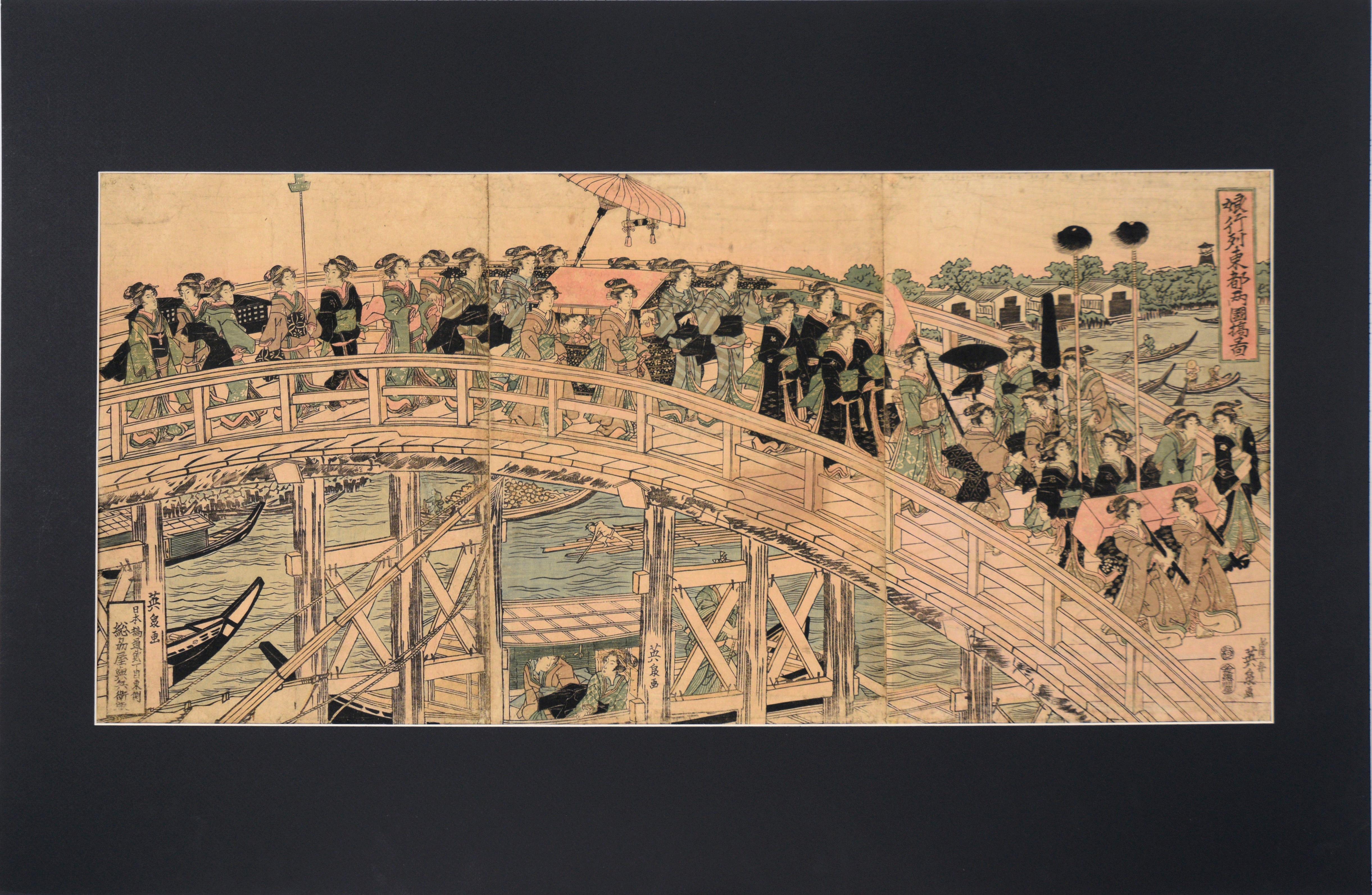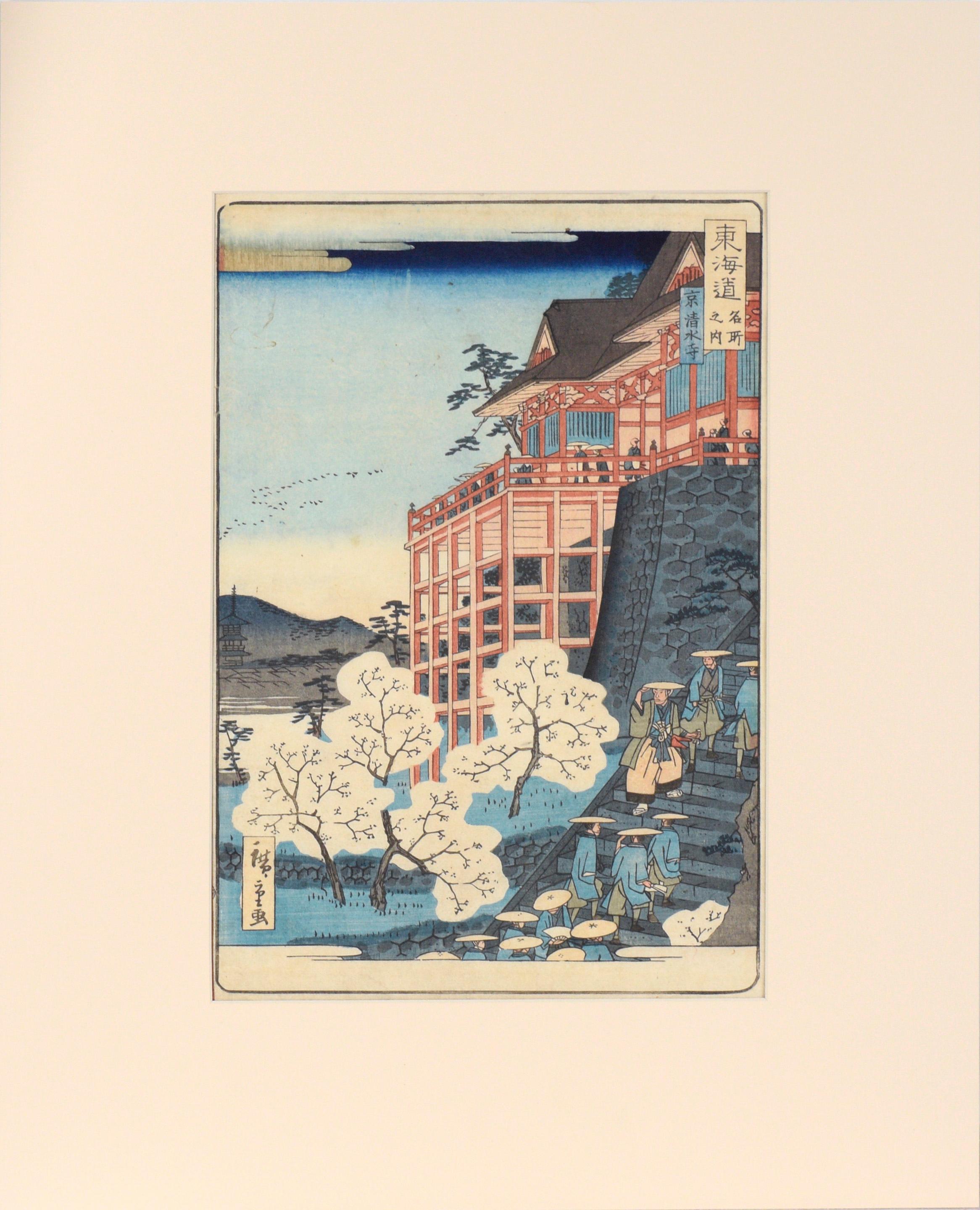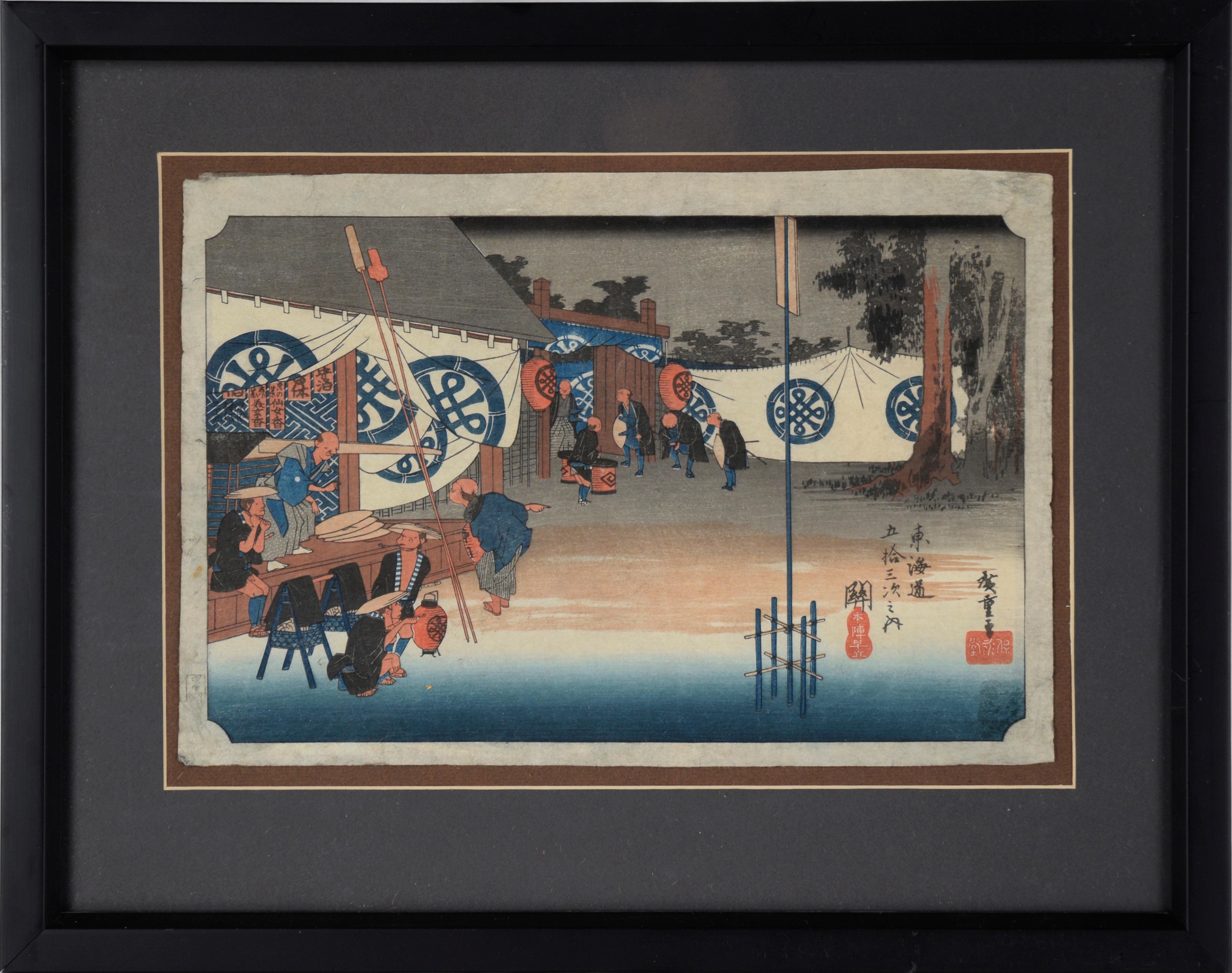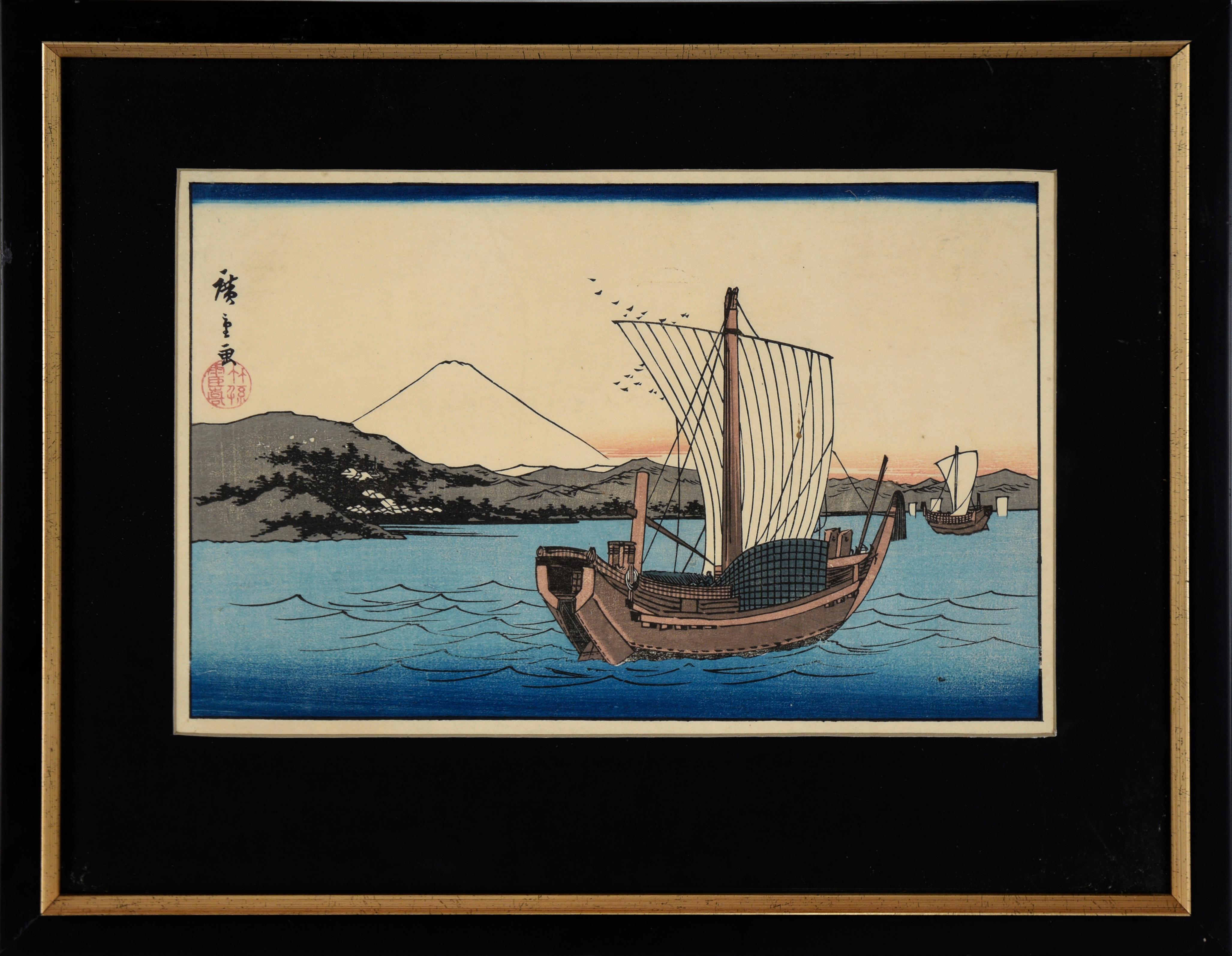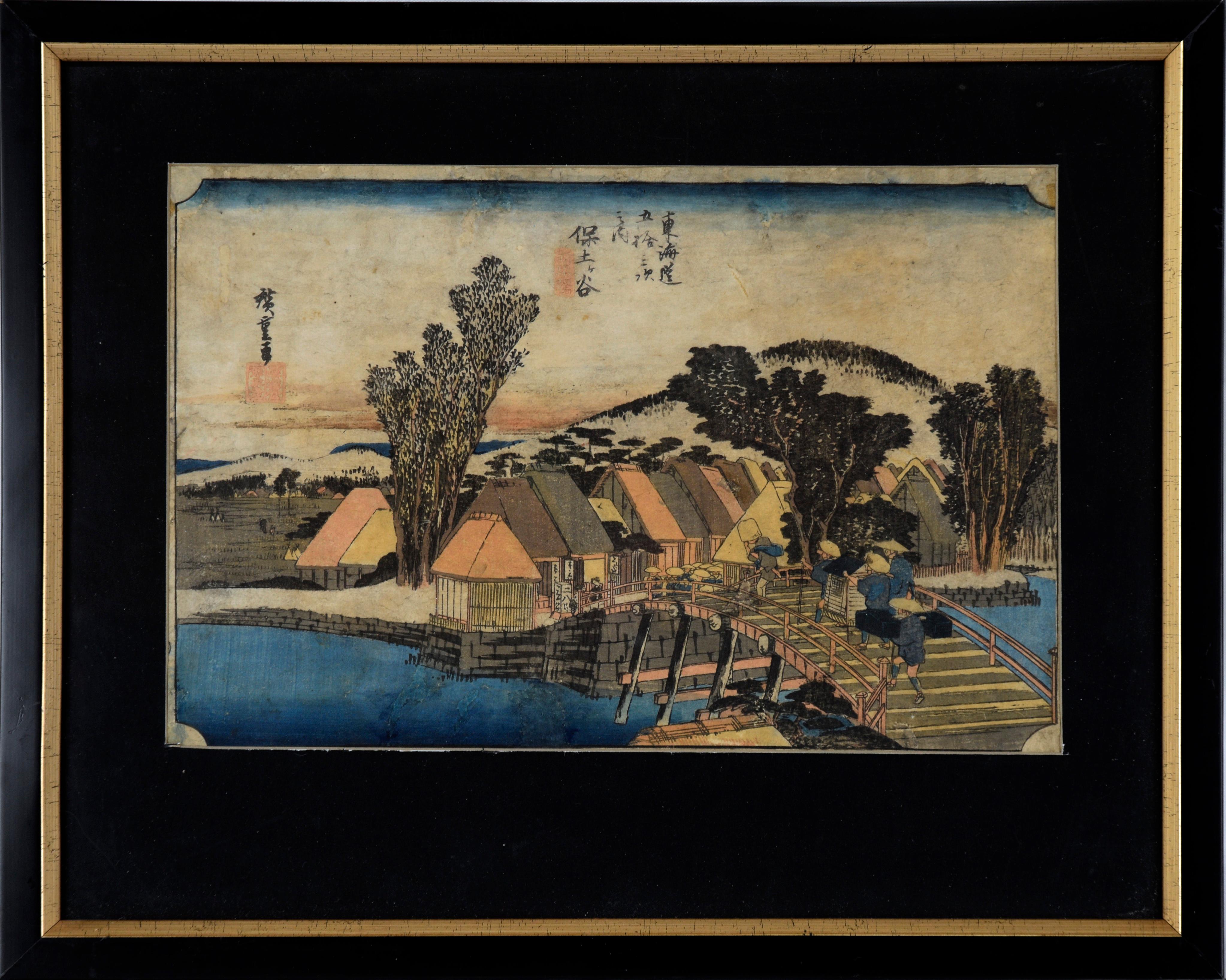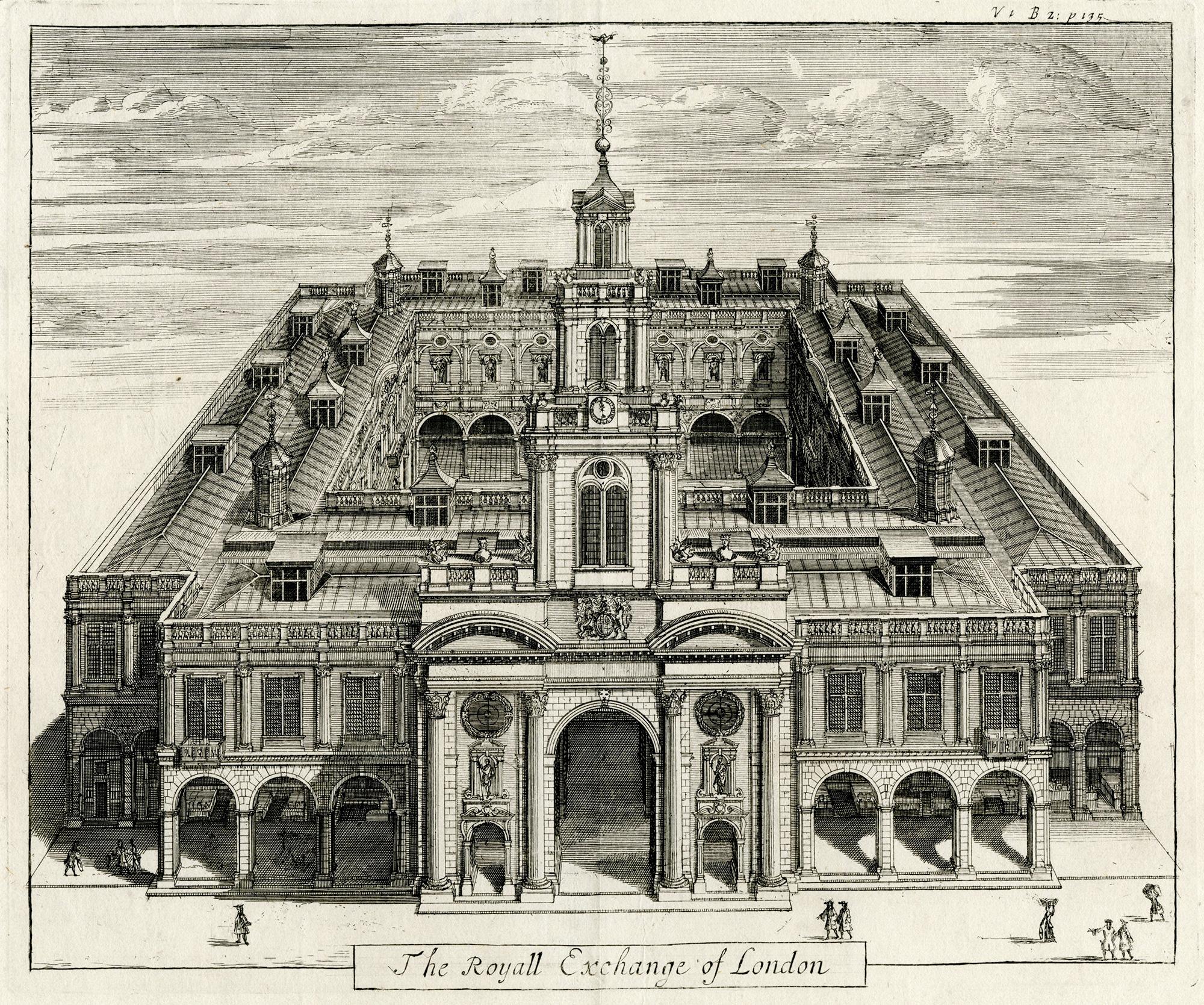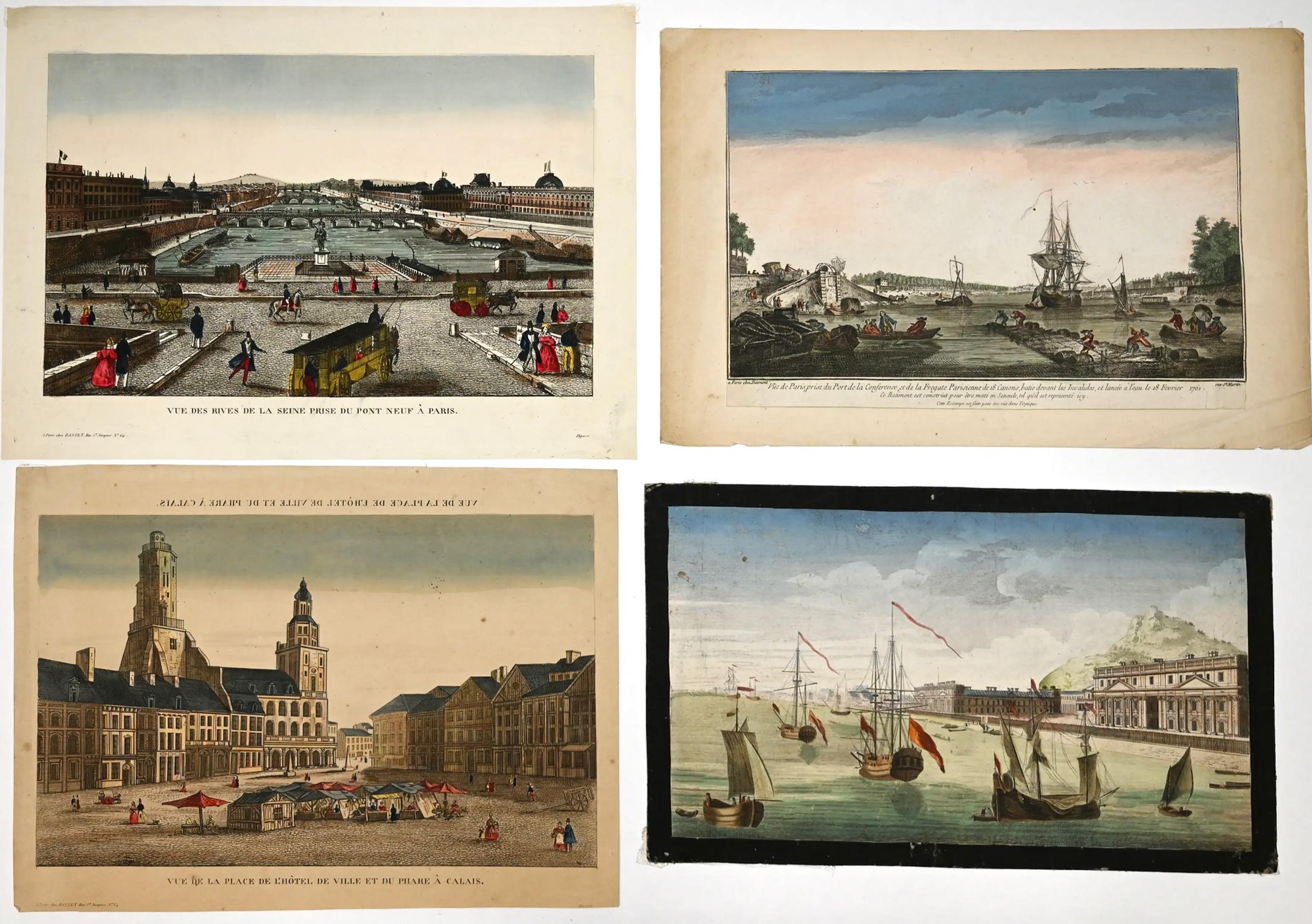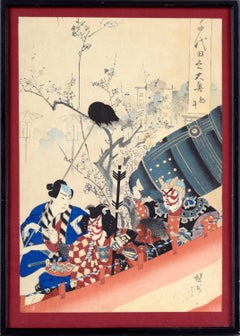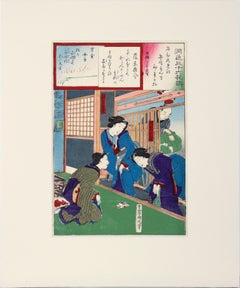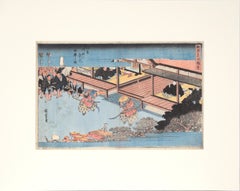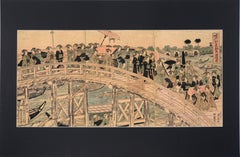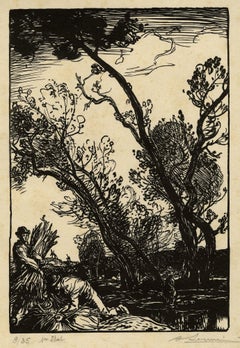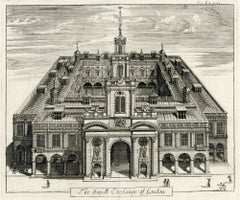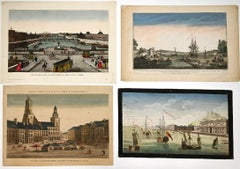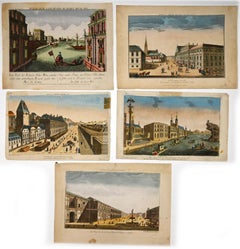
Procession of Women Carrying Palanquin - Japanese Woodblock by Utagawa Toyohiro
Video Loading
Want more images or videos?
Request additional images or videos from the seller
1 of 10
Utagawa ToyohiroProcession of Women Carrying Palanquin - Japanese Woodblock by Utagawa Toyohiroearly 1900s
early 1900s
$1,550List Price
About the Item
- Creator:Utagawa Toyohiro (1773 - 1828, Japanese)
- Creation Year:early 1900s
- Dimensions:Height: 43 in (109.22 cm)Width: 10.25 in (26.04 cm)Depth: 0.03 in (0.77 mm)
- Medium:
- Movement & Style:
- Period:
- Condition:Wear consistent with age. Tonal aging to paper. Colors are vibrant. Artwork is adhered to backing paper by a previous owner and stored and shipped in a tube.
- Gallery Location:Soquel, CA
- Reference Number:Seller: ANS90781stDibs: LU54214658332
About the Seller
5.0
Platinum Seller
Premium sellers with a 4.7+ rating and 24-hour response times
Established in 1986
1stDibs seller since 2014
2,980 sales on 1stDibs
Authenticity Guarantee
In the unlikely event there’s an issue with an item’s authenticity, contact us within 1 year for a full refund. DetailsMoney-Back Guarantee
If your item is not as described, is damaged in transit, or does not arrive, contact us within 7 days for a full refund. Details24-Hour Cancellation
You have a 24-hour grace period in which to reconsider your purchase, with no questions asked.Vetted Professional Sellers
Our world-class sellers must adhere to strict standards for service and quality, maintaining the integrity of our listings.Price-Match Guarantee
If you find that a seller listed the same item for a lower price elsewhere, we’ll match it.Trusted Global Delivery
Our best-in-class carrier network provides specialized shipping options worldwide, including custom delivery.More From This Seller
View All"First Horse Day, 1896" - Chiyoda Palace - Japanese Woodblock by Chikanobu Yoshu
By Toyohara Chikanobu
Located in Soquel, CA
"First Horse Day, 1896" - Chiyoda Palace - Japanese Woodblock by Chikanobu Yoshu
Colorful and expressive court scne by Toyohara Chikanobu,"Yoshu" (Japanese, 1838-1912).
This is the r...
Category
1890s French School Figurative Prints
Materials
Ink, Rice Paper, Woodcut
"Enshoku Sanju-roku Kasen" (Thirty-six Enchanting Flowers) Woodblock on paper
By Toyohara Kunichika
Located in Soquel, CA
"Enshoku Sanju-roku Kasen" (Thirty-six Enchanting Flowers) Woodblock on paper
Elegant woodblock print by Toyohara Kunuchika (Japanese, 1835-1900). Three women are in talking with each other inside, while a man waits outside holding a bag of some kind. The colors in this piece are rich and saturated, primarily blues, greens, and purple.
Mat size: 16"H x 20"W
Paper size: 14.75"H x 9.88"W
Born in 1835, Toyohara Kunichika grew up in the Kyobashi district of Edo in the midst of merchants and artisans. In 1848, at age 13, he was accepted as an apprentice into the studio of Utagawa Kunisada I...
Category
1880s Edo Figurative Prints
Materials
Ink, Rice Paper, Woodcut
Sumiyoshi: Dengaku dance performed during an Onda ceremony - Woodblock Print
By Utagawa Hiroshige
Located in Soquel, CA
Sumiyoshi: Dengaku dance performed during an Onda ceremony - Woodblock Print
Bright woodblock print by Utagawa Hiroshige (Japanese, 1797-1858). In this scene, two dancers with swords and fans are facing each other, in the center of a courtyard. There are spectators surrounding them, including nobles in black clothing on a balcony.
Presented in a new off-white mat with foamcore backing.
Mat size: 16"H x 20"W
Paper size: 9.63"H x 14.5W"
Utagawa Hiroshige (1797-1858, sometimes called Ando Hiroshige) was the second of the two great masters of the Japanese landscape woodblock print...
Category
1830s Edo Figurative Prints
Materials
Ink, Rice Paper, Woodcut
Mitate of a Daimyo's Procession Crossing Ryogoku Bridge - Woodblock Print
By Keisai Eisen
Located in Soquel, CA
Mitate of a Daimyo's Procession Crossing Ryogoku Bridge - Woodblock Print
Woodblock print of a procession by Keisai Eisen (Japanese, 1790–1848). Terrific triptych of a procession of...
Category
Early 19th Century Edo Figurative Prints
Materials
Ink, Rice Paper, Woodcut
Kiyomizu Temple, Scenes of Famous Places along Tôkaidô Road - Woodblock on Paper
By Utagawa Hiroshige II
Located in Soquel, CA
Kiyomizu Temple, Scenes of Famous Places along Tôkaidô Road - Woodblock on Paper
Full Title:
Kyoto: Kiyomizu Temple (Kyô Kiyomizudera), from the series Scenes of Famous Places along...
Category
1860s Edo Landscape Prints
Materials
Ink, Rice Paper, Woodcut
"Various Himochi" Wagashi Festival Japanese Woodblock Print by Utagawa Toyokuni
By Utagawa Toyokuni
Located in Soquel, CA
"Various Himochi" Wagashi Festival Japanese Woodblock Print by Utagawa Toyokuni
Rare oversized early 19th century 5-tiered woodblock by Utagawa Ichiyosai Toyokuni, (Japan, 1769-1825), a Japanese lord and wife oversee a sekku festival of food, music, and dolls or toys. '"oshi" is the first day of “Mi (Snake)” in the third month of the lunar calendar. This day, known in modern Japan as the Girls' Festival, originated in China as a form of purification ceremony in which water and drinking peach blossom wine were used to drive away evil. Many kinds of hishi-mochi appear in this picture of hina ningyo (dolls associated with Hinamatsuri, or the Girl’s Day) from Omochae.
The custom of eating special dishes at events throughout the year and at milestones in people's lives has existed since ancient times. This paragraph specifically focuses on the annual event called sekku, and life events that involve eating sweets. Joshi is the first day of “Mi (Snake)” in the third month of the lunar calendar. This day, known in modern Japan as the Girls' Festival, originated in China as a form of purification ceremony in which water and drinking peach blossom wine were used to drive away evil. According to the Keiso saijiki, in ancient China, on the third day of the third lunar month, people ate “ryuzetsuhan,” which is the juice of gogyo (Jersey cudweed) mixed with rice flour and nectar. In Japan, there is a record in the Heian period history book Nihon Montoku tenno jitsuroku [839-5] that it was an annual event to make kusamochi using gogyo on the third day of the third month of the lunar calendar, which may have been influenced by Chinese customs.
The tradition of eating kusamochi on the third day of the third month of the lunar calendar continued after that. By the Edo period, however, hishimochi had come to be used as a sweet to serve on the third day of the third month. A picture of a hishimochi is included in the Morisada manko , which we mentioned in Part 1. According to it, hishimochi in the Edo period were often three layers of green-white-green instead of the now common red-white-green. However, it is possible to see from our collection that not all hishimochi were made in this way. Omochae published in 1857, is a good example. Omochae is a type of ukiyoe print...
Category
1820s Edo Figurative Prints
Materials
Ink, Rice Paper, Woodcut
You May Also Like
Fin de Journée
By Auguste Lepère
Located in Middletown, NY
Paris: Sagot, 1889.
Wood engraving on cream laid Japon paper with full deckle edges, 8 3/8 x 5 3/4 (212 x 145 mm). Signed, numbered 9/35, and inscribed "1er Etat" in pencil in the l...
Category
Late 19th Century French School Landscape Prints
Materials
Handmade Paper, Woodcut
The Royal Exchange of London
Located in Middletown, NY
London: A. Churchill & J. Knapton, 1754
Engraving on fibrous laid paper with a "C" watermark, 9 3/4 x 11 3/4 inches (246 x 297 mm), full margins. Significant edge wear including mul...
Category
Mid-18th Century French School Landscape Prints
Materials
Handmade Paper, Engraving, Laid Paper
Four 18th Century Optical views of Paris etc.; "Vue des Rives de la Seine ....
Located in Middletown, NY
Four 18th Century Optical views
"Vue des Rives de la Seine prise du Pont Neuf à Paris"
"Vue de la Place de l'Hôtel de Ville et du Phare à Calais"
"Vue de Paris prise du Port de la Co...
Category
Mid-18th Century French School Landscape Prints
Materials
Handmade Paper, Watercolor, Engraving
Five (5) city views, 17th Century French School by Winckler and others
Located in Middletown, NY
Paris: c1675.
Five engravings: "Une Autre Partie du Palais Villa Mene a Gene" Engraving with hand-coloring, circa 1760-1790, on laid paper, with a Letters watermark (WA....), publis...
Category
Late 17th Century French School Landscape Prints
Materials
Watercolor, Handmade Paper, Engraving
Harbour with a Round Tower
By Claude Lorrain
Located in Middletown, NY
1641. Etching on cream wove paper, 5 1/16 x 7 11/16 inches (128 x 195 mm), narrow margins. Printed 19th century on a remainder which has a partially trimmed, printed image of a Virgi...
Category
Mid-17th Century French School Figurative Prints
Materials
Handmade Paper, Etching
The Pavilion de Mademoiselle and Part of the Louvre
By Charles Meryon
Located in Middletown, NY
A fine and early state impression from an almost unparralled 19th century Parisian collection curated by Loys Delteil.
Etching, drypoint, and roulette on buff laid Japon paper, 5 7/16 x 9 13/16 inches (137 × 249 mm) full margins. In very good condition with light and unobtrusive scattered foxing. Some pencil inscriptions in the margins, recto, as well as the Alfred Beurdeley collection stamp (Lugt 421) in black ink in the lower left margin on the recto. There are some light scattered inscriptions in pencil on the verso, as well as a numerical stamp in blue ink, which we believe is the lot number from part III of a well-known series of sales of Beurdeley's collection organized by Loys Delteil. This portion of the sale of Beurdeley's massive collection focused on Modern Prints, and took place on May 19 – 20, 1920, in Paris. In regard to the content of the sale, Fritz Lugt states "Meryon's work included all the beautiful pieces about Paris." A rich and tonal impression.
[Delteil & Wright 9; Schneiderman 12].
A note on the provenance:
Alfred Beurdeley (1847-1919) was the son of one of the first antique dealers in Paris...
Category
Mid-19th Century French School Landscape Prints
Materials
Handmade Paper, Laid Paper, Etching
Recently Viewed
View AllMore Ways To Browse
Japanese Woodblock Print Book Edo Period
Maerten De Vos
Noyer Philippe
Persian Cat
Salvador Dali Flower
Seated Woman Picasso
Shunga Prints
Utamaro Kitagawa
Vintage Insect Book
Vintage Man Reading Newspaper
Vintage Thrift
Vitraux Pour Jerusalem
19th Century Japanese Silk Embroidery
3d Wall Art Bird
Alfred Hair Paintings
Dali Beatrice
Dali Mythology
Dali Watch
